January 12, 2024Meet Derek Gauer, a seasoned professional with more than 30 years of CAD experience in civil engineering design. Derek is a Senior CAD Designer at Crozier in our Milton office. He recently presented at the AutoCAD University conference in Las Vegas, sharing insights and facilitating a round-table discussion on CAD management. Below Derek answers some of our questions on his career, trends in CAD design, and what the future holds for engineering technicians and technologists.
- You have over 30 years of experience in civil engineering design. Can you walk us through some of your career highlights and milestones?
I started my career in design, and then moved over to CAD management. Working in CAD management allowed me to work across Canada, the US, the UK, Greece, South Africa, and China. Later in my career, I ran my own consulting company and then finally joined the team at Crozier.
It has been amazing to watch Crozier grow from 150 to 300 people over the last four years. I have been lucky to be able to contribute to great projects in the Milton office like Derry Green and to be part of the Crozier CAD committee.
- You recently delivered a presentation at Autodesk University’s annual conference in Las Vegas. What inspired you to present at the conference, and what are some of the key takeaways?
The biggest takeaway from Autodesk University is that CAD technicians from across North America are experiencing similar challenges. Small- to mid-size companies often do not have full-time CAD management, so designers instinctively fill the gaps. As a result, many companies are falling behind in the use of CAD technology software. Fortunately, here at Crozier, we are constantly evolving and improving design processes, which I believe will keep us competitive in the future.
- You have presented at Autodesk University for more than six years now. What motivated you to start presenting, and what do you enjoy most about the conference?
Autodesk University is the largest conference in the world for users of Autodesk products, and the conference is the best way to keep current with the latest technology for CAD design. Now that I have presented a few times, I am more confident speaking publicly and sharing my experience with people from around the world.
- What are the biggest obstacles to career growth as a designer in the land development engineering field?
I think the number one obstacle to a successful career is not having enough site experience early on. Having good field experience will make you a much better designer. Students are also coming out of most universities and colleges without enough experience with products like AutoCAD/Civil 3D or the basics of good drafting practices.
- What do you see as the next big trend in land development/civil engineering design?
The integration of AI into our design processes will be extremely important in the coming years. I don’t believe this will replace staff but allow some tasks to be automated. Another big trend in land development is the development of digital twins. A digital twin in engineering refers to a digital replica of a physical object, system, or process. It’s a concept that has gained prominence with advancements in technology, particularly in areas like computer-aided design. The purpose of creating a digital twin is to have a real-time, virtual model that mirrors the behavior and characteristics of its physical counterpart.
- What is one piece of advice you have for other engineering technicians and technologists in the civil engineering design field?
Perhaps the most valuable piece of advice for engineering technicians and technologists is to prioritize continuous learning and stay updated on industry advancements in technology. Don’t be afraid of technology. Embrace it and use it to your advantage in design. Consistently learning new software can improve your designs. Civil engineering is a field with evolving technologies, design standards, and construction practices. To remain competitive and deliver high-quality results, it’s crucial to stay updated about the latest trends in technology.
 Print
Print
|
Back to News




